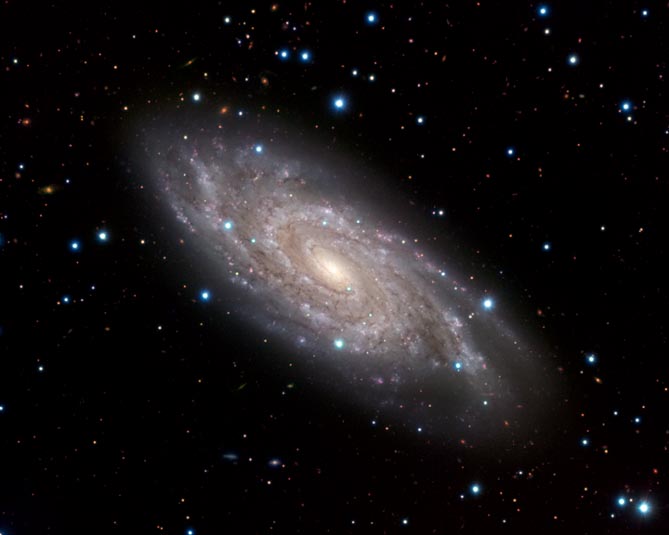
Spiral Galaxy
RA 16h 21m 48.62s Dec -2° 16' 59.29"
Serpens Caput
80 million light years
6.53 x 5.21 arcminutes
North is 180.0° left of vertical
ESO
May 31, 2010
ABOUT THIS IMAGE:
NGC 6118, a grand-design spiral galaxy, shines bright in this image, displaying its central bar and tight spiral arms from its home in the constellation of Serpens (The Snake). It measures roughly 110,000 light-years across; about the same as our own galaxy, the Milky Way. Its shape is classified as "SA(s)cd," meaning that it has several rather loosely wound spiral arms. The large numbers of bright bluish knots are active star-forming regions where some very luminous and young stars can be perceived.
Because it is so faint, NGC 6118 is a challenging object to see with a small telescope. Amateur astronomers have nicknamed it the "Blinking Galaxy", because it has a tendency to flick in and out of view with different eye positions. The brilliant blue star-forming regions of the galaxy, where hot young stars are born, are beautifully illuminated, even from over 80 million light-years away. In 2004, regular observers of this galaxy saw a "new star" appear near the edge of the galaxy (above the center of the image). Far from being a new star, this object, supernova 2004dk, is in fact the final, powerful burst of light emitted by the explosion of a star.
Though
shy to lesser telescopes, the galaxy cannot hide from ESO's Very Large
Telescope (VLT) at Cerro Paranal, Chile. The image was obtained using
the VIsible MultiObject Spectrograph (VIMOS) at the VLT.